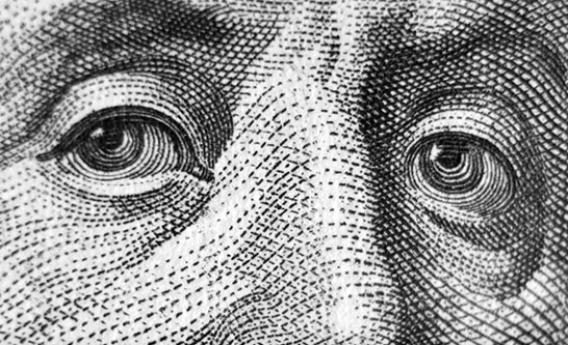
Elderly Wisdom, Youthful Ingenuity
Creativity isn’t only for the young. Learn about the geniuses who gave us valuable inventions well into old age—and the young people who are returning the favor.

Prodigies are overrated. Our culture loves to celebrate the early bloomers, the shining young minds that guide their generation. But there’s nothing all that special about child geniuses; in fact, some of America’s most brilliant inventors designed their best creations in old age. The youthful masterminds may get all the attention, but it’s the late bloomers who’ve given America some of its most treasured inventions.
Consider Benjamin Franklin. The polymath is famous for his political philosophy, insightful writings, diplomatic dealings—and, of course, his ingenious inventions. Any schoolchild knows that Franklin proved the existence of electricity by flying a kite in a storm. But for Franklin, electricity was only the tip of the iceberg. The inventor-politician’s mind grew increasingly restless as he entered old age, constantly searching for creative solutions to common problems. Franklin’s terrible eyesight led him to invent bifocals during his eighth decade by fitting two lenses into the same frame. Previously, anyone suffering simultaneously from near-sightedness and far-sightedness had to switch between two pairs of glasses; after Franklin’s invention, those cursed with bad eyesight could settle on a single, stylish pair.
For the perpetually busy Franklin, the best inventions helped save time through quick and easy innovations. Realizing that many furnaces presented serious fire hazards, he developed the Franklin stove in 1741 in order to heat homes faster with less wood and minimal smoke. (Those who declined to buy the Franklin stove might instead purchase fire insurance, invented by Ben Franklin. But one of his most resonant inventions came in his 70s, when Franklin served as America’s postmaster general. Tasked with delivering large quantities of mail across vast distances, Franklin decided to measure various routes to maximize efficiency—and the odometer was born.
A century after Franklin was tinkering with his first odometer, another great American inventor was coming into his prime: Thomas Edison. A wildly prolific inventor, Edison skyrocketed to fame in his 30s when he developed a means of harnessing electricity for use in homes and factories. Edison’s electrical inventions, including light bulbs and power stations, led to widespread industrialization across the United States and beyond. And his development of motion pictures and music recording brought new types of entertainment to millions of Americans.
Yet these creations often overshadow one of Thomas Edison’s most fascinating inventions: the electric car. In his 60s and 70s, Edison befriended Henry Ford and developed an interest in the hot new invention of the time, the car. But Edison distrusted diesel and gasoline engines; instead, he believed cars should run on electricity, powered by batteries. The only available batteries at the time, lead-acid, were unreliable and delicate, so Edison created a new battery with a nickel cathode and an iron cathode—a prototype for the battery used in hybrids and electric cars today. Although Edison’s invention was too expensive to compete with the gasoline-powered Model T, it enjoyed respectable sales during Edison’s final years and made a decent profit.
Why did these inventors reach a high point of brilliance so late in life? It seems that as we age, our brain becomes more adept at combining experience and wisdom with creativity and new ideas. Sure, Pablo Picasso developed Cubism in his 20s—but Frank Lloyd Wright designed the Guggenheim in his 80s and early 90s. It’s no surprise that 60 percent of members of the United Inventors Association of America are over the age of 50. Age is not a hindrance to imagination. It’s an inspiration.
It’s good news, then, that more and more Americans are living well beyond retirement age, remaining healthy and independent into their 70s, 80s, and beyond. And as the country’s elderly population slides into an active senescence, its younger citizens are busy inventing new ways to make life easier, longer, and more fulfilling for everyone.
Quality of life, of course, isn’t merely about health—although scientists are constantly developing new medicines and therapies to expand Americans’ lifespan. But young people are also developing quirky and creative ways to address the problems of old age. One MIT graduate student has invented insoles to help prevent elderly people from falling. (Falls are one of the deadliest threats for senior citizens.) His creation, the so-called iShoe, measures the foot’s pressure distribution to anticipate a future fall, reporting the information back to a doctor. The iShoes of the future will prevent falls altogether by providing sensory stimulation when a patient is off-balance.
For seniors who struggle with walking, Honda has developed a futuristic machine to keep handicapped people mobile. The device lifts and moves the wearer’s feet for him, allowing him to walk short distances without falling or straining his body. A robotic wheelchair developed at the University of Pittsburgh performs a similar function for arms. And the uBot-5, a robotic assistant, can help seniors carry objects, remember medications, and even monitor their health. These inventions might not have sprung from mature minds—but they’ll help generation after generation of elderly people enjoy their golden years to the fullest extent, making all our lives richer and happier. Ben Franklin and Thomas Edison would be proud.
